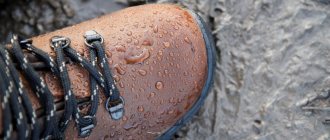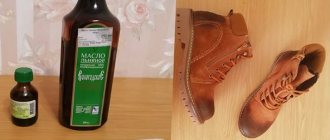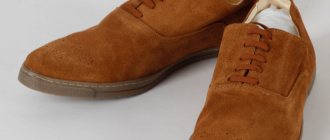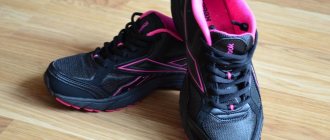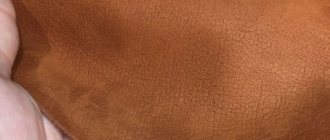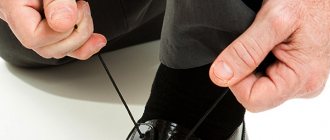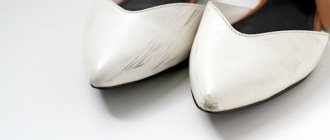Nobody wants to walk in wet shoes. But moisture from the street tries to get inside. Boots that get wet cause a lot of trouble. From the unpleasant sensation of a foot squelching in a shoe to colds and pneumonia.
If your shoes get wet, you definitely need to do something about them. Professional and folk methods will help eliminate the problem.
Causes of the problem
It happens that even the best quality shoes get wet. Sometimes this happens as a result of improper care or storage, and sometimes due to the fault of the manufacturer. There are many reasons why boots get wet, and here are the most common ones:
- Poor quality materials. To provide everyone with affordable shoes, manufacturers use cheap materials. Often such boots come apart, crack, the sole falls off, and the locks come apart. This is all due to poor quality assembly of the boots at the factory.
- The sole came off. With prolonged wear, the glued sole often does not stand up and comes off. This happens less often with stitched shoes. To make such a sole fall off, you need to try.
- Chemical exposure. In winter, chemicals are sprinkled on icy roads to make the ice disappear. Unfortunately, even the best quality boots “disappear” along with the ice.
- Synthetic materials. Leather substitute and dermantine crack due to moisture and low temperatures. Shoes become fragile and begin to let moisture through.
Sole defects and repairs
Many people are interested in the question of what to do if their shoes get wet. When shoes leak, you first need to check the sole, since often the cause of wet feet is associated with its damage or poor quality. If the sole has defects or is of poor quality, then in wet weather it is better not to risk your health by wearing such shoes for a walk. It is necessary to carefully inspect it, identify defects and take the following measures:
- Sew or re-glue the sole if it has become unstuck. But since not everyone has such talents, it is better to seek help from the nearest shoemaker.
- A defective sole with cracks or holes can be treated with drying oil. To do this, you need to sand the sole a little, then apply drying oil and leave to dry. You can also install soles in problem areas, but if you doubt your own abilities, entrust this task to a specialist.
- Poor-quality seams must be impregnated (coated) with any water-repellent cream or spray for waterproof shoes.
In order not to be tormented in the future by the question of how to protect your shoes from getting wet, carefully check the quality of the soles and seams when purchasing.
In search of protection from moisture, we first of all turn our attention to leather or suede care products, without skimping on impregnations and wax creams. But what if the problem is not so much in the upper part of the shoes, but in the sole? But it is precisely this material that comes into direct contact with wet asphalt or damp soil, and it is its damage or poor quality that is the cause of your wet feet.
Agree, you rarely step into such deep puddles that your shoe goes under the water up to your ankle, but if you still have such a sin, then it’s better to get a pair of rubber boots right now. The fact is that if you step into a shallow puddle, you will very quickly feel moisture on your feet, but neither leather nor good quality suede can let water through so quickly.
- Poor-quality seams can be coated and impregnated with any water-repellent cream or spray, and folk remedies include animal fat, wax, paraffin or castor oil. True, this method will not help get rid of the problem once and for all, and you will have to periodically update the protective layer.
- Poorly glued soles are more common on cheap leatherette shoes, but regardless of the base material, there is only one solution: tear off the sole and glue it, or better yet, re-stitch it. Of course, not everyone has the skills of a shoemaker, and most likely you will have to take your shoes to the workshop, so think about whether this pair of shoes is worth the money and time spent on it.
- Cracks or holes in shoes can be sealed. Although, in order to get ahead of the problem, it is better to do this with new boots. To do this, you need to lightly sand the sole to strengthen the adhesion of the material to the surface, apply drying oil and let it dry completely. A more radical way to deal with leaking soles would be to install soles on top of the original sole.
We invite you to familiarize yourself with an acrylic or steel bathtub: what is better, what is different, reviews
How to prepare boots for the season
After wearing shoes for a season, you will already know about the vulnerable spots. If you take care of them in advance, you can prevent the problem. The first thing to do is to inspect the boots for damage, cracks, integrity of seams, fittings:
- The slightly loose sole should be glued back. If the sole is too loose, then the pair of boots is sent to the workshop.
- Drying oil will help eliminate cracks and small holes. After applying it to the defects, the surface is thoroughly dried.
- If necessary, you should change the heels, strengthen the heel and heel.
- A thin, slippery sole can be strengthened by placing an overlay on it from a piece of high-quality rubber.
- Purchase a water-repellent nourishing leather cream and carefully apply it to the shoes, paying attention to the seams.
Preparatory measures
Before you start processing shoes, you need to prepare them well. This rule applies to the use of any means - both folk and store-bought.
The skin is thoroughly cleaned, if it is heavily soiled, washed and then dried. If you treat dirty shoes with impregnations, the effectiveness of the process will greatly decrease. Contaminants will not allow active substances to penetrate the structure of the leather or leatherette and will remain on the surface.
Professional water repellents
Shoe store shelves are full of a variety of products to protect your skin from getting wet. Some boot manufacturers include a cream or spray in the box with a pair that is recommended for a specific product. In this case, remember the name and then purchase only that.
Spray
If your shoes get wet, store-bought water-repellent sprays will help solve the problem. You need to soak your boots every time before going outside. As stated in the description, the spray reliably protects the material from moisture, preventing it from penetrating inside.
There are a lot of aerosols sold in the shoe department, here are the best ones:
- Salamander;
- Ecco;
- Collonil Nanopro;
- Kiwi Aqua Stop.
Each brand has products for different shoe materials. Salamander and Ecco are intended for suede, genuine leather, textiles. Collonil Nanopro and Kiwi Aqua Stop are universal sprays that are suitable for textiles, velor, dermantine, leather and nubuck.
Important! Silicone-based sprays are only suitable for smooth skin. For other materials, fluorine-containing products are used.
Cream
Fat creams care for the surface, nourish it, and create a protective layer that prevents getting wet.
The stores sell impregnation creams of different brands. Recommended products:
- Salamander;
- Grangers G-Wax;
- SMS Olvist.
They contain lipids, beeswax, and other fat-containing components. The cream protects boots from getting wet, gives them shine, eliminates signs of wear, and covers up scuffs.
Advice! To avoid getting wet, you need to treat your shoes every day. Impregnations with wax and silicone are quickly washed off, especially in humid, rainy weather.
Wax
You can treat your shoes so they don't get wet using shoe wax. It is recommended only for leather and varnished surfaces.
The following varieties exist:
- bee;
- pressed;
- extraction;
- bleached.
A soft, delicate product is obtained from bee, and bleached is used for hard, rough skin. Coloring agents are added to the wax, so it easily replaces colored shoe polish.
Most often, wax is used when you need to “heal” shoes with cracks and creases. It gently softens cracked areas and makes them invisible.
Natural fiber brushes or a medium-hard sponge will help you apply the wax correctly. Procedure:
- Wash and dry your shoes.
- Scoop up a little product with a brush.
- Rub it into the material in a circular motion, starting from the sock.
Important! After applying the wax, be sure to warm it up with a hairdryer so that it penetrates deep into the skin.
Preventive measures
There is no better treatment than prevention. Treat a new pair with a protective agent three times every 24 hours, and thoroughly clean the old pair of dirt and dry it before spraying. If the skin is soft and thin, use sprays, oils, and treat the berets and tarpaulin with a rich nourishing cream. Sprays will not make shoes waterproof if they are made of rough leather.
The meaning of protective agents is impregnation. You have applied enough cream or spray if it stops being absorbed. Leave your shoes to dry overnight. Then you will be sure that things will last a long time, and puddles will only appear on the street. Those who prefer to use creams should choose those that are 40% fat.
How do you like the article?
Folk recipes
Homemade water-repellent mixtures are no worse than store-bought ones. They will make the shoes waterproof and protect them from moisture. The main component of the homemade mixture is fat of animal or vegetable origin; you can also use paraffin or petroleum jelly.
Salo
The easiest way to protect boots from moisture is pork or lamb lard. But you can’t just take a piece and lubricate your boots with it. You need to prepare a mixture with one of the following compositions.
Ingredients of the first recipe:
- 70 g lard;
- 70 g linseed oil;
- 15 g castor oil.
Melt the solid fat, add oil and castor oil. Cool the product slightly. Rub the shoes with the hot mixture so that it penetrates deep into the material.
Ingredients of the second recipe:
- 75 g lard;
- 75 g linseed oil;
- 15 g turpentine.
The method of preparation and application is similar.
Goose fat
If your boots get wet, you can soak them in goose (duck) fat. It protects the feathers of waterfowl from moisture, which means it will also be useful for shoes. To prepare the product, the following components are used in the following proportions:
- 3/4 fat;
- 1/3 granulated wax;
- 1/3 castor oil.
The solid components are melted over a fire and castor oil is added. Heat the surface with a hairdryer and rub the hot mixture with a sponge. Feet in such shoes will not get wet for a long time, since the fat remains in the skin for a long time.
Petrolatum
Pharmacy Vaseline is a universal and budget-friendly water-repellent. It can prevent getting wet, but to do this you need to apply it correctly:
- Wash and dry a pair of boots.
- Distribute the Vaseline evenly, not forgetting the seams.
- Heat with a hairdryer until the product melts, clogging pores and cracks.
- Wipe the top with a soft cloth, put it in a warm place to dry.
- After time, the Vaseline will harden, forming an invisible protective layer on the surface. It will not let water through, and your feet in such boots will not get wet.
Paraffin
Paraffin - liquid and solid - will help protect shoes from getting wet. The easiest way is to take a candle and thoroughly rub the surface of the shoes. A more labor-intensive but effective method is to melt the paraffin in a water bath and rub it into the surface of the product with a sponge.
Or break the candle into small pieces and place them on your boots. Blow with a hairdryer until the pieces spread over the skin. Rub in the liquid paraffin with a soft cloth, paying special attention to seams and joints.
Wax + linseed oil
The wax water repellent is no worse than the store-bought equivalent. To prepare the mixture take:
- 100 g wax;
- 20 g flax oil.
Wax granules or a regular candle are broken into pieces and melted on the stove. Add oil to the liquid and mix until smooth. The resulting wax is used to treat the top of the product, rubbing thoroughly.
When the product hardens, it forms a protective film on the surface of the shoe. These boots will not get wet for a long time.
Castor oil + fat
Remedies for getting wet based on castor oil and fat are the easiest to prepare. In a 1:1 ratio, mix castor oil with any solid fat-containing component. This can be goose fat, pork or lamb lard, wax or paraffin.
The solid component is heated in a saucepan or in a water bath, castor oil is added to it, and mixed until smooth. The product is still hot, rubbed into the skin and dried. The mixture of fat and oil remains on the surface of the shoe for a long time, which reliably protects against getting wet.
Fish oil recipe
Fish oil can protect boots from getting wet. Components of the water-repellent mixture:
- 30 g glycerin;
- 60 g fish oil;
- 45 g turpentine;
- 12 g wax.
Beeswax or a wax candle is melted, turpentine, fat and glycerin are added to the liquid. The hot mixture is rubbed into the shoes and left overnight.
Advice! It is not necessary to buy liquid fish oil; you can use it in capsules.
You can also...
- Impregnate poor-quality seams with a special agent with water-repellent properties. True, this manipulation will have to be repeated periodically.
- Dry the cracks and holes (note - sand the surface, and then apply drying oil and wait for it to dry).
- Install outsoles (rolling) on top of your sole if you do not want to change it completely.
- Buy fat-containing (nutrient) products for leather shoes. They will restore elasticity to the boots and prevent cracking.
- Buy creams/aerosols based on beeswax for patent leather shoes.
- Find special products for shoes with breathable membranes. Such products will enhance the water-repellent effect and support pore breathing.
How to choose the right shoe size - tables of all shoe sizes for adults
Useful tips
- Always wash and clean your shoes after coming in from outside.
- Fat cream is used for rough boots made of thick leather. For more elegant products, sprays and emulsions should be used.
- Before storing, lubricate boots or boots with a care product or vegetable oil. This will help the leather retain moisture and not crack.
- If you have treated your boots with the product and they still get wet, you should contact a repair shop. Perhaps there is a crack or hole somewhere, or moisture is penetrating through the sole.
- If you recently purchased shoes and they are already getting wet, you have every right to return them to the store. To do this, be sure to keep your receipt.
If your shoes are wet
If you do get your shoes wet, you need to dry them thoroughly. At the same time, you should not place suede or leather products on the radiator or near heating devices. They shorten the life of products, which then crack and become deformed.
Shoes should be dried at room temperature under natural conditions. After complete drying, the shoes are treated with cream or spray.
Insoles from wet shoes are removed and dried separately. It is better to have at least two pairs of boots, boots and shoes for each season, so that wet shoes have time to completely dry and soak.
To speed up the drying process, place crumpled newspapers without illustrations or photographs or light paper inside each shoe or boot. When newspapers become wet, replace them with dry ones. For more information on how to properly dry shoes, see the link.
